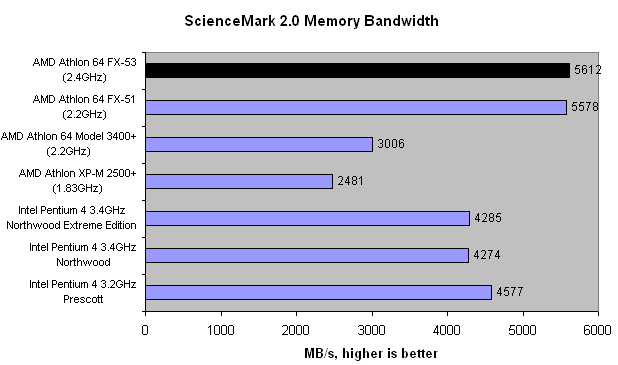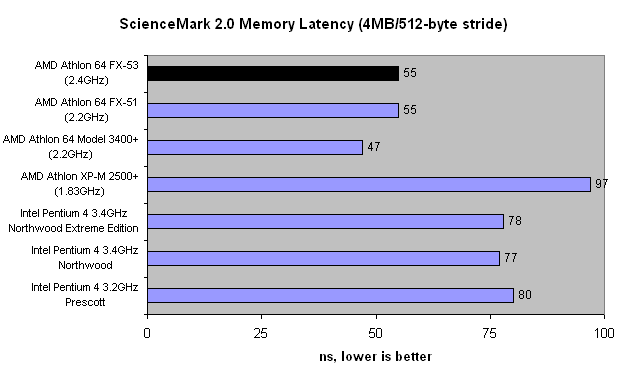ScienceMark 2.0 and Pifast
We usually start off with a look at memory bandwidth and latency. Why break a longstanding tradition?.
AMD's Athlon 64 Model 3400+ uses a single (non-ECC) 64-bit memory channel that affords around 3.2GB/s of unbuffered bandwidth with DDR400 memory. That's why it lags in comparison to the glut of Intel CPUs run on a dual-channel motherboard, capable of theoretically outputting up to 6.4GB/s with identical memory. The FX-53 can manage the same feat, thanks to its dual 64-bit controllers, and it's far more effective, according to ScienceMark 2.0. Remember that we're not measuring the speed of the on-chip memory controller. What'll confuse the above chart is when AMD launch the current single-channel S754 Clawhammer in S939 format, together with FX-53-like dual 64-bit memory controllers but with only 512kb of L2 cache.

We talked about the positive performance effects of taking a Northbridge out of the equation. We can clearly see that, even with comparatively poor RAM latencies, both FX CPUs are able to knock over 20ns of overall latency out of tuned Intel boards and low-latency Corsair RAM. We also alluded to the ECC RAM's inability to match non-ECC memory's timings. That's why the Model 3400+ Clawhammer looks so good here. In a nutshell, the FX CPUs have far greater bandwidth than the Model 3xxx but are let down by access time. Kind of like comparing a hard drive with a large areal density to a smaller one with a faster access time.

Pifast, the constant calculator, results indicate that bandwidth is more important than latency. Bot the FX-51 and Model 3400+ are clocked in at 2.2GHz, yet the former is significantly (scientifically speaking) quicker. 2.4GHz of Athlon FX power brings us tantalisingly close to the 50-second barrier, something that's out of reach of even the 3.4GHz Extreme Edition, bolstered as it is with 2MB of L3 cache. Notice how slow the 3.2GHz Prescott is.









